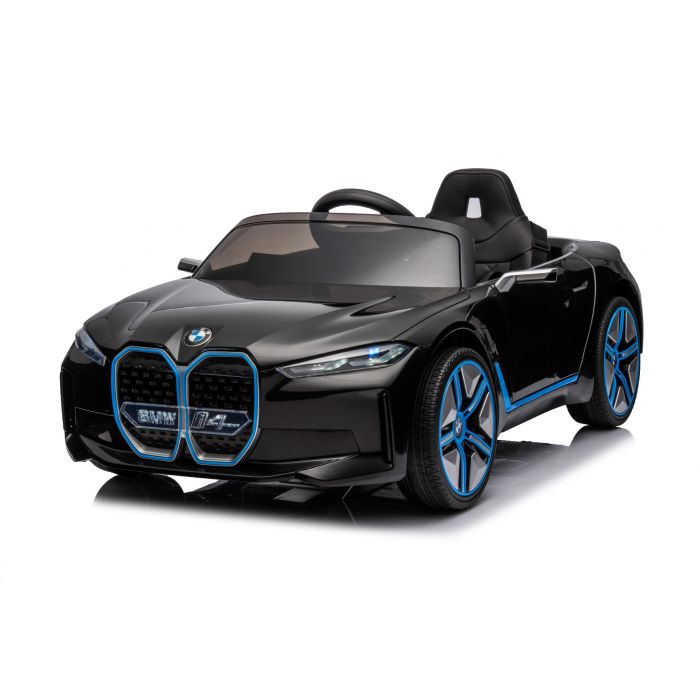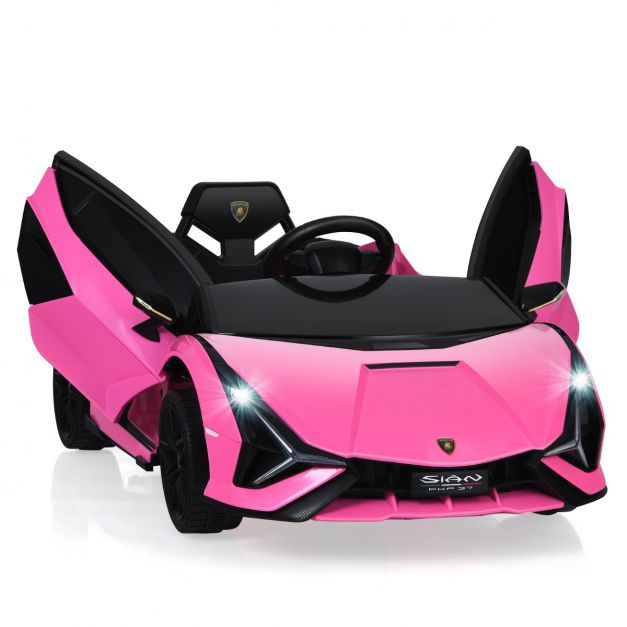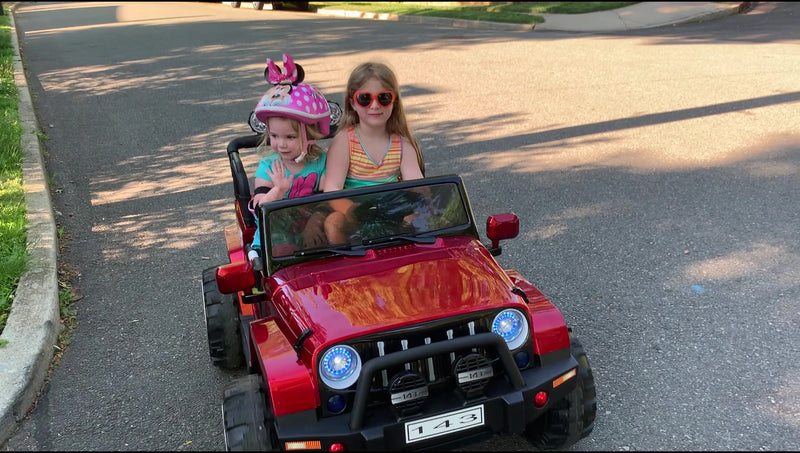Good Facts For Choosing Kids Ride On Cars
Good Facts For Choosing Kids Ride On Cars
Blog Article
What Are The Benefits Of Electric Vehicles Vs Remote Controlled Kid's Cars
Both electric and remotely-controlled kids' car offer distinct advantages and features that cater to different tastes and requirements. Here are the benefits and features of electric vehicles for children.
Independence - Children can to operate electric children's cars on their own which increases their sense of control.
Motor Skill Development - Operating an electric vehicle requires motor skills such as acceleration, steering, and braking, which helps children develop coordination as well as spatial awareness.
Realistic Experience. Children's automobiles are typically constructed with realistic features such as working headlights or engines and horns. This gives you an engaging and immersive experience.
Outdoor Play - Electric children' cars are suitable for use in the outdoors on paved surfaces such as driveways, sidewalks, or playgrounds, allowing children to explore and enjoy the great outdoors.
Physical Activity: Driving an electrical car requires physical activity since the child must use their feet or hands to operate the controls. This promotes the child to move and also encourages exercise.
Advantages of Remote-Controlled Kids' Cars -
Parental Supervision. Parents can monitor their children and guide their children in the game. It's an excellent option to offer extra security.
Guided Learning - Parents can make use of the remote control to help guide their child to teach them how to safely operate the vehicle. They can eventually move to autonomous driving when the child gains in confidence and mastery.
Versatility - Remote-controlled kids' cars can be operated by hand by the child, or remotely by the parent, providing flexibility and flexibility to adapt to different levels of skill and play situations.
Safety - Parents who utilize remote control are able to prevent collisions and accidents by taking the car off or steering it away. This enhances safety when playing.
Remotely controlled kids' cars offer fun and entertainment for children as well as the parents. The car lets kids to interact and play with each other as they discover its capabilities.
The decision between remote-controlled and electric cars for children is ultimately based on factors such as the age of the child of the child, parental supervision, skills and their preferences. Electric cars allow for realistic playing and independence, whereas remote controlled cars offer safety, direction and allow for active play. Follow the top electric kids cars for blog tips including childs electric ride on car, ride on digger, toy car toy car, electric ride on cars, a toy car, car on ride, toy a car, remote control childrens electric cars, toy toy cars, ride on toy and more. . 
What Maintenance And Assembly Requirements Exist For Kids' Rides On Vehicles?
Assembling and maintaining ride-on toys for children is essential to ensure their safety, performance and durability. Here are the typical maintenance and assembly requirements for kid's ride-on cars - Assembly -
The majority of vehicles with ride-ons are assembled in a way and require some assembly. Connecting steering wheels, wheels, seats, and other components as per the instructions provided by the manufacturer is typically required.
Follow the steps for assembly with care to make sure that all pieces are aligned and properly connected. Use the hardware and tools included to complete the procedure.
Cleaning -
Regularly cleaning is vital for keeping the ride-on vehicle looking its best and functioning effectively. Use a soft sponge or cloth soaked in mild soap and water to clean the exterior surfaces.
Pay special attention to places that are prone to accumulation including the wheels, tires and undercarriage. Make use of a toothbrush or brush to remove grime from places that are difficult to reach.
Do not use harsh cleaners or water jets that have high pressure that could damage the paint and electronic components on car.
Battery Care -
To ensure performance and prolong the life of your battery that is a ride-on, it is essential to take good care of your battery. Follow these guidelines for maintaining your battery -
Fully charge the battery before and after each use to ensure maximum runtime.
Avoid charging batteries excessively or leaving them hooked up to chargers for prolonged periods. These actions can damage batteries and shorten their life.
When not in usage when not in use, store the ride on car and battery away from direct sunshine or extreme temperatures.
The battery terminals should be checked regularly for signs of corrosion and damage. They can be cleaned using wire bristles or terminal cleaner, if required.
Replace the battery if it no longer holds an charge or is showing evidence of damage or degrade.
Tire Maintenance -
Check the tires regularly for indications of damage, wear or loss of pressure. Tires can be inflated up to the recommended levels with a bicycle or an air compressor.
Inspect the tread pattern for any debris or foreign objects that may cause punctures or flats. Replace worn tires and clear any obstructions.
Lubricate your wheels and axles to ensure smooth rotation.
Occasional Repairs and Replacements
Despite the regular maintenance, some ride-ons may need repairs or parts replacements from wear and wear and.
Keep an eye out for indicators of deterioration or malfunction, such as unusual noises, loss of power, or erratic behavior. Contact customer support or follow the manual of the manufacturer for assistance with troubleshooting.
Replace damaged or worn-out components promptly to stop any further damage, and ensure the safety and performance of the ride-on vehicle.
By following these guidelines for maintenance and assembly, you can keep your kid's ride-on car in great condition and enjoy hours of fun and safe time with your child. See the top rated go here for electric kids cars for blog advice including toy the car, childrens electric ride on, car electric ride on, electric ride on cars, toy car toy car, riding digger, a toy car, childs electric ride on car, electric ride along car, childrens electric ride on and more. . 
What Are The Various Types Of Remote Controlled Cars For Children? What Are The Advantages And Disadvantages Of These Vehicles?
Remote control children's cars, also known as RC cars, or remote-controlled vehicles, come in various dimensions and styles as well as price ranges to fit various budgets and preferences. This article will provide an overview of the varieties, sizes, costs, pros, and cons of remote control children's cars The types of remote control Children's Cars -
Electric RC Cars – These are remote-controlled, battery-powered vehicles that can be operated inside and outside. They come in various designs, such as buggies, trucks, and sports cars.
Nitro RC Cars – Gas-powered remote controlled vehicles that have higher performance and speeds however, more expertise and maintenance is required for operation. They're generally bigger and cost more than an electric RC car.
Scale models can be described as replicas of real life vehicles including cars and trucks. They are also operated remotely. Scale models range from 1-10 to 1-24, with larger scales allowing for more details.
Sizes -
The dimensions of remote-controlled cars for kids range from small micro-sized models to larger-scale versions. Size can affect the efficiency of a car in terms of speed, as well as the handling characteristics.
Micro-sized vehicles are small and light, which makes them ideal for indoor use and play by younger children. The larger cars offer more power and durability, making them ideal for off-roading and racing.
Prices are
Prices for remote-controlled kids' cars may vary based on features, brand and quality.
Micro-sized electric and nitro powered cars for RC are available in sizes that range from $20 to $100.
Model cars in scale and top-of-the-line hobby RCs can cost anywhere from a few hundred to over 1,000 dollars, depending on how detailed and powerful they are.
Pros & Pros and
Pros -
Entertainment - Remote control for children's cars can provide hours of excitement and enjoyment for children and adults alike.
Skill Development. Driving a RC car lets children develop hand-eye coordination, spatial awareness and problem-solving abilities.
Social Interaction. RC cars encourage social interaction and be enjoyed by friends and families.
Customization - A lot of RC automobiles can be modified by using accessories, aftermarket components, upgrades and other accessories to improve the performance and look.
Cons
Costs - Quality remote control children's vehicles can be costly, especially hobby-grade models with sophisticated features.
It can be difficult for children to operate the RC cars for the first time.
Maintenance: Cars in RC require regular maintenance, including cleaning, oiling, and occasionally repair or replacement of parts.
Safety Concerns Safety Issues RC vehicles are prone to danger in the event that they aren't operated responsibly under adult supervision. They could result in accidents, falls and electrical dangers.
In general, remote-control children's vehicles provide a thrilling and educational experience for children of all ages. However, when deciding on the best model for your child, it is important to consider things like cost, size, features and safety. Hobby-grade RCs may be suitable for older kids and enthusiasts and simpler models can be a good fit for young children and those who are new to the world of. Check out the top remote control childrens cars kidscars.co.uk info for website advice including toy car toy car, car toy car toy, childrens ride on, car toy car toy, cars pedal car, lambo toy car, electric ride on, remote control childrens car, car toy toy, electric car ride and more. .